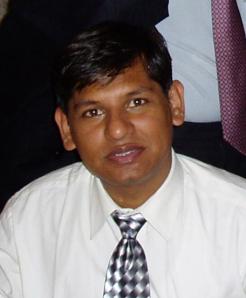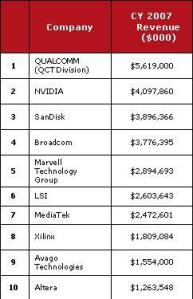Archive
VDAT 2010: Real, but 'different' opportunity in emerging markets — Jaswinder Ahuja, Cadence
The VLSI Design and Test Symposium 2010 (VDAT 2010) was held last week (July 7-9) at the picturesque Chitkara University Campus, Himachal Pradesh, located 32 kms from Chandigarh.
VDAT is an annual activity of the VLSI Society of India, and was initiated to provide a discussion forum for Indian academicians and industry professionals working in the areas related to VLSI.
Delivering the keynote, Jaswinder Ahuja, corporate vice president and managing director, Cadence Design Systems India, said: “There is a “real” but “different” opportunity in the emerging markets. One would have to immerse himself/herself to understand the market better. India is also a great proxy for the emerging markets. It has the design expertise as well to address this market.
“The next 10-15 years present a unique window of opportunity to India entrepreneurs to play a leadership role in the global economic growth.”
Elaborating on the “real” but “different” opportunity in emerging markets, he added: “The base of the pyramid opportunity is very real. As per World Resources Institute, there are four billion people in the developing world representing a $5 trillion market opportunity who have real needs and aspirations but are under served.
“At least 700 million of these people are in India and represent a real business opportunity as well as an opportunity to “do good” and help include them into the formal economy and enable India to achieve its aspiration of 9-10 percent “inclusive” GDP growth. This requires business innovation and a different mind-set presenting a transformative opportunity to marry low cost, good quality, sustainability and profitability at the same time.”
India a great proxy for emerging markets!
India is also said to be a great proxy for the emerging markets. Ahuja explained: “India is many markets — urban, semi-urban and rural) in one and presents a broad spectrum of challenges that need to be overcome to be able to reach the 700 million people market opportunity.”
“If we can make something (product or service) work in India, we can make it work pretty much anywhere else in the developing world – whether it is financing, distribution, logistics, operating environment or anything else.”
Opportunity for Indian entrepreneurs to play leadership role
The next 10-15 years present a unique window of opportunity to India entrepreneurs to play a leadership role in the global economic growth.
According to Ahuja: “The markets of the future are in our backyard and we have among the best design talent in the world. If we can immerse ourselves in the market to understand the real needs and opportunities and then leverage our design expertise to build products for this market we will be best positioned to serve the next 4 billion consumers of the world.
“Indian entrepreneurs have an opportunity to play a leadership role in the global economic growth across sectors, but especially in electronics. No other country in the world has this unique convergence of circumstances. This opportunity is once in a lifetime and ours to lose if we do not create the right environment and framework to leverage it.” Read more…
What India now offers to global semicon industry!
This semicon blog post is very timely as I keep getting a lot of questions on the topic: what does India NOW offer to the global semiconductor industry in this recession! In fact, several industry friends asked me this question during the recently held ISA Vision Summit 2009.
By the way, I have two good sessions from the ISA Vision Summit 2009 to blog about, and those will happen after this post! So, stay tuned folks!! 🙂
Back to the key question: What does the Indian semiconductor industry now offer to the world?
 My quest for answers took me to S. Janakiraman, former chairman, India Semiconductor Association (ISA) and President and CEO-R&D Services, MindTree. Incidentally, Jani Sir, had highlighted some time ago that despite the lack of wafer IC fabs, fabless India continues to shine brightly! And, I agree with him! Even at Dubai last year, during the IEF 2008, Jani Sir had talked about India’s growing might in global semicon. I consider him to be the right person to discuss how India should frame its semicon path forward.
My quest for answers took me to S. Janakiraman, former chairman, India Semiconductor Association (ISA) and President and CEO-R&D Services, MindTree. Incidentally, Jani Sir, had highlighted some time ago that despite the lack of wafer IC fabs, fabless India continues to shine brightly! And, I agree with him! Even at Dubai last year, during the IEF 2008, Jani Sir had talked about India’s growing might in global semicon. I consider him to be the right person to discuss how India should frame its semicon path forward.
According to Jani Sir, we will remain in a tough economic scenario for some more time to come. “The cost of R&D, be it development or re-engineering or support is critical for the survival of semiconductor companies, but all of this needs to be done at lower costs. India will continue to be a cost leader to get more engineering done at the same cost or the same engineering done at a lower cost. India will continue to be a safe haven for such investments,” he contends.
India itself is a high growth market that will get sizable in the next five years for the semiconductor companies. No one can understand India and the emerging market requirements than the companies who are located here. That can be leveraged by the world to create value for many products that will serve the emerging market needs.
Janakiraman said: “Indian companies are also investing in technologies and creating intellectual properties/building blocks of technologies. These are the essential elements to create products/solutions in a shorter time-frame when the market starts recovering and builds up the appetite for consumption. Hence, Indian companies need to invest more in such areas and position themselves as value-add vendors to source technologies.”
Newer markets such as electronics in healthcare and renewable energy space provides a level-playing field since India’s maturity level is no less inferior to the western world. “We need to invest, and create solutions and products that can establish India not only as a market, but also a leading technology provider for the global market,” Janakiraman advises.
Has Indian semicon lost its way a bit?
Some folks believe that the Indian semiconductor industry has slightly lost its way since the SemIndia fab debacle late last year. I’ve mentioned earlier that hardly anyone wants to speak about having fabs in India at this point of time. Nevertheless, we’ll need to explore whether the Indian semiconductor industry is still on track!
According to Janakiraman, while the global consumption of semiconductors has seen a drastic drop in Q4 of 2008 and is likely to see a negative growth in H1 of 2009, India will be one among the few markets that will see an increasing consumption through the sales of electronic products.
He added: “The captive and design services companies serving the semiconductor market are facing a head wind, no doubt. However, the impact on them is much lesser compared to what is happening in the rest of the world.”
With the Indian semiconductor market continuing to grow, while the global market is in decline, it is possible that India may end up seeing a slower growth, but with an increased market share.
Janakiraman said: “I see the dynamics in the market will lead to India gaining way for the longer term, even though we can’t escape the short term pains. When the recovery starts, India will gather much stronger and faster momentum of growth as it will be a lucrative market for selling and the lower cost market for sourcing for any of the global semiconductor players.”
Finally, what really needs to be done to get the industry in India buzzing? For starters, don’t give up hope!
Added Janakiraman: “Look at it as an opportunity to get into a level-playing field rather than a losing ground. Consider India as a potential future market. Look at and invest in the emerging opportunities such as healthcare/security/energy, and build products like telemedicine, surveillance systems and power management systems. Invest in idea creation and product management systems, and get ready for the new model of business when recovery starts.”
I wonder why Jani Sir didn’t deliver the keynote at the ISA Vision Summit 2009! He is just the right person as far as propping up Indian semicon is concerned!!



